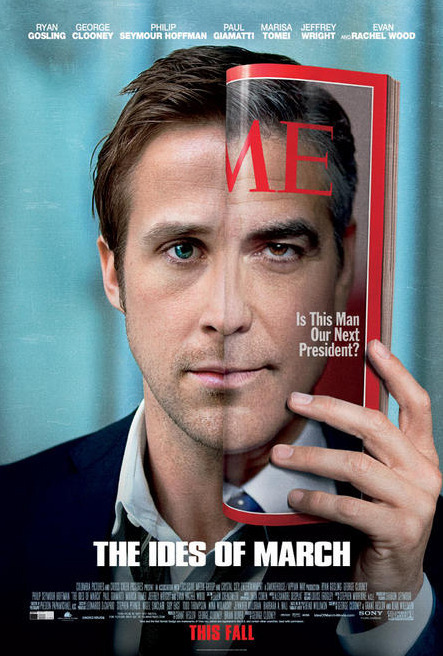 Politics are saturating the atmosphere as potential presidential candidates vie for the Republican nomination. “The Ides of March,” George Clooney’s new film as co-writer, director and star, offers a look behind the scenes of that process. Not surprisingly, it is a dirty world.
Politics are saturating the atmosphere as potential presidential candidates vie for the Republican nomination. “The Ides of March,” George Clooney’s new film as co-writer, director and star, offers a look behind the scenes of that process. Not surprisingly, it is a dirty world.“The Ides of March” is based on the 2008 play “Farragut North” by Beau Willimon, which was loosely based on the 2004 Democratic primary campaign of Howard Dean. The retitling of the movie is in reference to the day Julius Caesar was assassinated and would imply that this story will have its own assassination. It doesn’t.
The title is a metaphor for the backstabbing that occurs to get ahead and for the death of ideals of Ryan Gosling’s Stephen Meyers, the second in command for the presidential campaign of Clooney’s Mike Morris.
Trailers and advertisements for the film have made it appear to be a taut, fast-paced political thriller. It isn’t. It is a deliberately paced drama that shows the inside workings of a political campaign much the same way that “Primary Colors” did in 1998. That was a broader and more savagely funny look at the process, but both films follow the same arc: the disillusionment of a campaign staff members who at one point truly believed in their candidates.
“The Ides of March” is a more dramatic, even heavy-handed, approach to the subject matter. There’s a twist involving an intern played by Evan Rachel Wood that isn’t exactly what you expect, and it works. Another twist is then added on top of the first that is a bit of a stretch. Wood’s performance can't be faulted though. Like the rest of the cast, she is excellent. She is charming, intelligent and, when needed, emotionally vulnerable.
This plot development is the linchpin on which Gosling’s belief in Clooney swings, and in the final third of the film Gosling’s character goes from idealist to hardened cynic. It is a transformation that is well acted by Gosling and, while you’re watching it, is effective and believable, but doesn’t hold up to much scrutiny. The timeline of the film is mere weeks. Gosling’s character seems pretty quick to sell his candidate out at the first sign of imperfection.
Perhaps this is the limitation of the source material showing through. The film does very much feel like a play, which isn’t a bad thing, but perhaps the material could’ve been further expanded for the film. Maybe the changes in Gosling’s character should have developed over the span of several months.
Despite these flaws, this is well crafted and exceptionally well acted film. The performances in this film are what make it work.
Clooney is believable as a presidential candidate, so much so that if his character were to run in real life he’d probably get a nomination.
Clooney is believable as a presidential candidate, so much so that if his character were to run in real life he’d probably get a nomination.
Philip Seymour Hoffman plays the head of Clooney's campaign staff and he gives a fantastic speech about loyalty. Paul Giamatti is head of the rival candidate's staff and in a few scenes steals the movie. His character tries to court Gosling to his side. When Giamatti reveals his true intentions it is a shocking moment.
Marisa Tomei is solid as a journalist who helps introduce the film’s ongoing theme of friendship. What does that word mean in the political world? It is a good question, and the way it is explored is interesting.
Outside of the acting, the best thing about “The Ides of March” is the feeling that we are getting an inside look. The film opens with a microphone check for a speech and closes with Gosling being prepped for a TV interview. These behind the scene details are fascinating as are the behind-closed-doors conversations that the characters have.
The games, manipulations and tricks that are played to win in politics are not exactly surprising, but are engaging and thought provoking as presented by Clooney and his cast.
